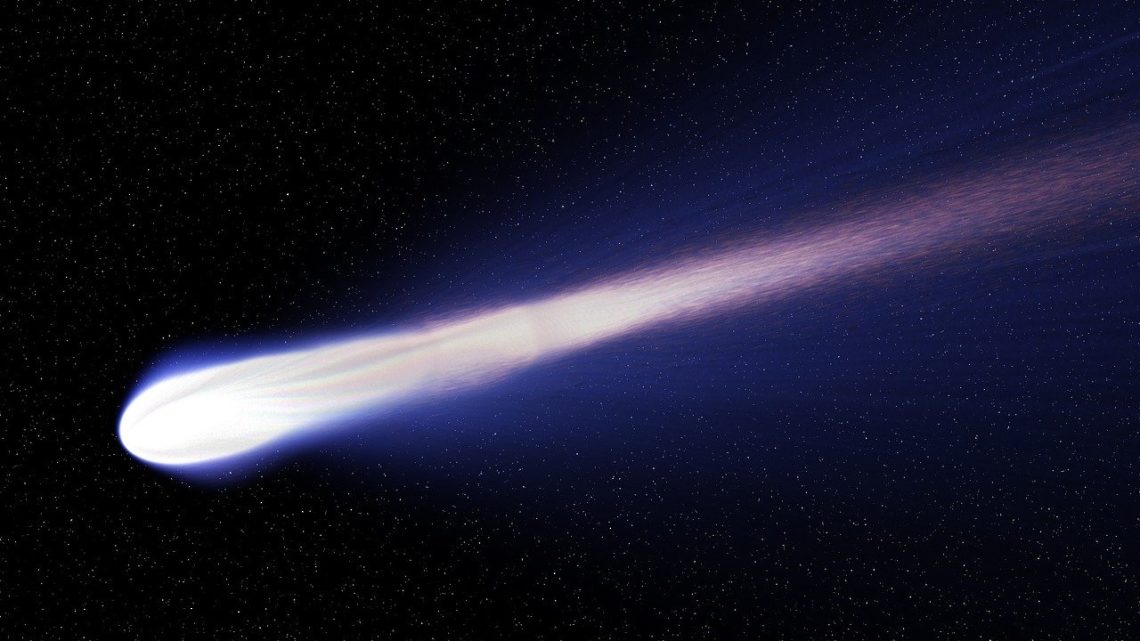By Lucy Berliant
Everything known is limited to what is in our literal and theoretical reach. (2) Our knowledge, to put it crudely, “of how things work”, is all within the Heliopause. That is as far as our suns flow reaches. (1) By everything we know, it’s not just in terms of science, our history, our biology, our literature; all of what we know and have ever known is contained within this bubble. The significance of an interstellar object is contact with the unknown. Space holds everything that we could possibly discover.
Currently our technology can’t take us out of the Heliopause, so we rely on interstellar objects coming to us. Of course, it was only recently that we could even have the technology for looking into space, and the chances of us detecting something seemed unlikely.
That was until October 19th, 2017 when the first interstellar object came into view. (5) It was a flat, bread stick shaped hunk of something hurtling through our solar system. It moved around 57,000 miles per hour. This is how scientists could tell that it was not from the neighborhood; nothing here can move that fast. (6) The sun’s gravity pulled it closer, it moved in a curved arc through our planets until it disappeared back into interstellar space. It was named Oumuamua, meaning “first.” (6)
Photos and videos were studied heavily in the scientific community. What they knew was that it was a comet, the rest is theoretical. It did not behave like our own comets. Not just its speed, it was also missing the tail of debris that typically follows. What was also strange was how reflective it was. Data suggests it was up to 10 times brighter than our comments. One theory surrounding the brightness and the speed was that it may be because of outgassing. This would remove the dust from the surface shaving it down to reveal nothing but the ices beneath. Unfortunately, there may never be a full explanation. Davide Farnocchia, a NASA scientist, said it perfectly: “Usually, if we get a measurement from a comet that’s kind of weird, we go back and measure it again until we understand what we’re seeing, but this one is gone forever; we probably know as much about it as we’re ever going to know.” (7)
Many worried that this was their missed chance. Humans will ever see Oumuamua again, but there was still hope for another interstellar encounter. This happened a lot sooner than expected. A few days ago, something entered our galaxy. The comet that was quoted to be “unambiguously interstellar in origin” (unnamed NASA scientist) 2i/Borisov entered our radar. (9) It’s currently on a fast pace path towards the sun, moving around 93,000 miles per hour. (10) It will be closest to the planet on December 8th at around 190 million miles away. (10) The scientific community has been ravenous taking as much data from it as possible. This is what we know so far; from optical images we can see comets color which shows its chemical makeup. It seems to be similar to long-distance Oort cloud comets, according to NASA’s researchers (11). It’s hard to pinpoint an origin, but Polish scientists have published a paper showing that it likely was around Kruger 60; a star located 13 light-years away. (11) This comet’s only similarity to Oumuamua is it’s icy body. It differs greatly because it does have a dust trail following, it is much bigger, and faster. It measures between 1.2 – 10 miles in diameter. (10,9) As it moves closer new facts and data have arisen.
There is a chance of learning something we have never learned before. What makes it even better is if someone has a decent telescope they can see it up until April of 2020. We may learn something no humans have known before. This is something amazing.
Bibliography
- Ghose, T. (2013, September 13). Voyager 1 Really Is In Interstellar Space: How NASA Knows. Retrieved September 26, 2019, from Space.com website: https://www.space.com/22797-voyager-1-interstellar-space-nasa-proof.html
- A, C. (2014, March 12). This Is What We Don’t Know About The Universe. Retrieved from Scientific American Blog Network website: https://blogs.scientificamerican.com/life-unbounded/this-is-what-we-done28099t-know-about-the-universe/
- Heliosphere | Science Mission Directorate. (2018). Retrieved September 26, 2019, from Nasa.gov website: https://science.nasa.gov/heliophysics/focus-areas/heliosphere
- Definition of ALIEN. (2019). Retrieved from Merriam-webster.com website: https://www.merriam-webster.com/dictionary/alien
- Mann, A. (2019, March 14). ’Oumuamua: The First Interstellar Object. Retrieved September 26, 2019, from Space.com website: https://www.space.com/oumuamua.html
- Small Asteroid or Comet “Visits” from Beyond the Solar System. (2017). Retrieved September 26, 2019, from Hawaii.edu website: http://www.ifa.hawaii.edu/info/press-releases/interstellar/
- Wall, M. (2018, November 15). Interstellar Object ’Oumuamua Is Probably a Small, Surprisingly Shiny Comet. Retrieved September 26, 2019, from Space.com website: https://www.space.com/42437-oumuamua-interstellar-object-small-shiny-comet.html
- CBS News. (2012, July 16). Top 10 fastest cars in the world. Retrieved September 26, 2019, from Cbsnews.com website: https://www.cbsnews.com/pictures/top-10-fastest-cars-in-the-world/
- Starr, M. (2019). The Second Interstellar Object Has Been Officially Detected in Our Solar System. Retrieved September 27, 2019, from ScienceAlert website: https://www.sciencealert.com/our-new-interstellar-visitor-is-now-official-and-it-has-a-name
- DC Agle. (2019, September 12). Newly Discovered Comet Is Likely Interstellar Visitor. Retrieved September 27, 2019, from NASA/JPL website: https://www.jpl.nasa.gov/news/news.php?feature=7498
- Dybczyński, Piotr A, Królikowska, M., & Wysoczańska, R. (2019). Kruger 60 — a plausible home system of the interstellar comet C/2019 Q4. Retrieved September 27, 2019, from arXiv.org website: https://arxiv.org/abs/1909.10952






2 Comments
Carmen
I found this fascinating and very informative. To think a star is 13 light years away. To try to put that into a perspective is crazy to me. I love the details and the research you put into this essay. You seem like you have a passion for the universe and all included. I want to search for more stars and I want to go and find 2i/Borisov and other galaxies.
Gillian
Your passion is unparalleled Lucy. It’s so abundantly clear that space is something you love. The time and research it takes to pull something like this together is truly admirable. You have a way of articulating all of the most interesting parts of something so complex, in a way that anyone could understand it and gain something from the reading. Even someone like me who is almost entirely ignorant of how space works.That is to say, I really like your article, both times I’ve been exposed to it.